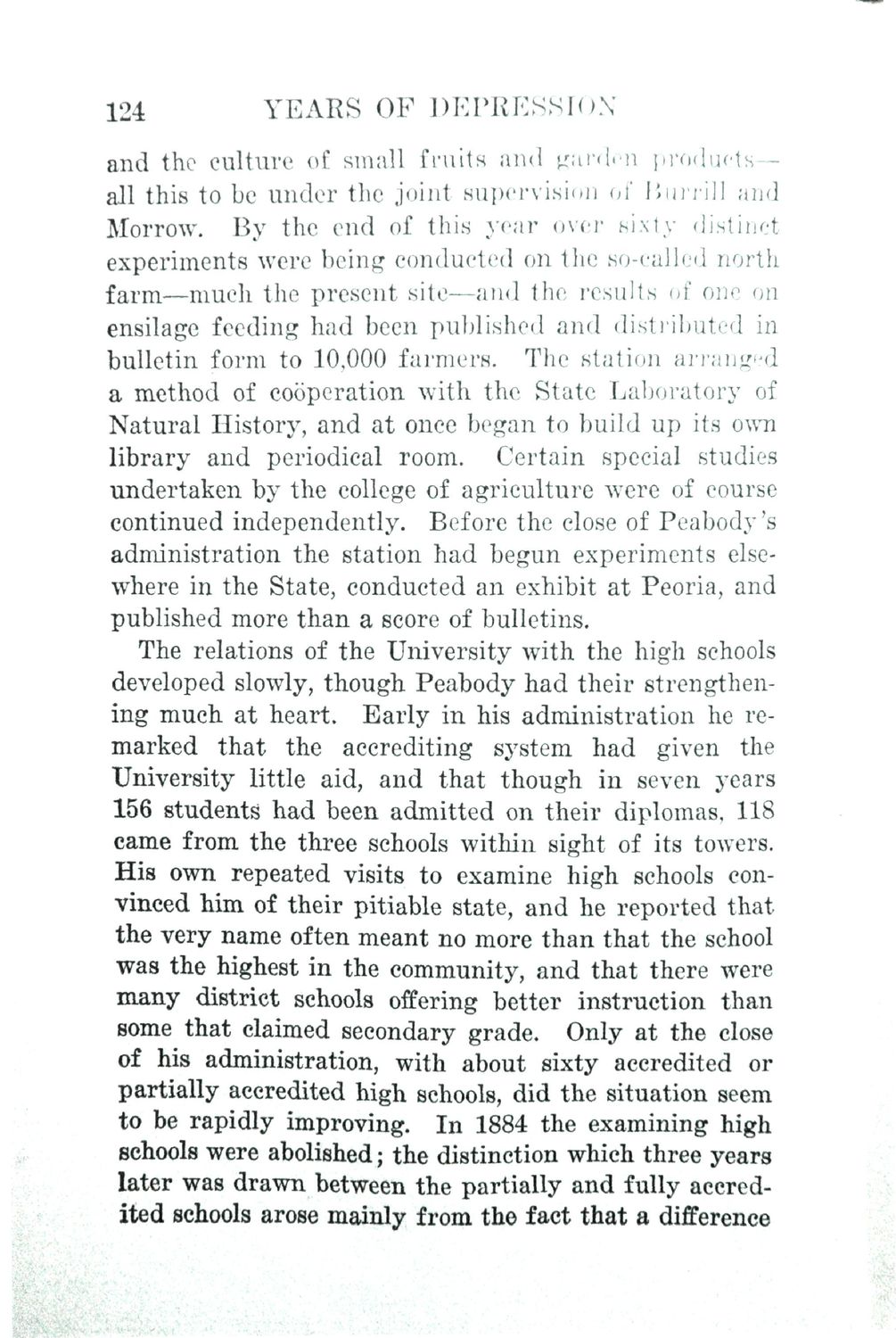| |
| |
Caption: Book - History of the University (Nevins)
This is a reduced-resolution page image for fast online browsing.

EXTRACTED TEXT FROM PAGE:
124 YEARS OF DEPRESSION and the culture of small fruits and garden productsall this to be under the joint supervision of Burrill and Morrow. By the end of this year over sixty distinct experiments were being conducted on the so-called north farm—much the present site—and the results of one on ensilage feeding had been published and distributed in bulletin form to 10,000 farmers. The station arranged a method of cooperation with the State Laboratory of Natural History, and at once began to build up its own library and periodical room. Certain special studies undertaken by the college of agriculture were of course continued independently. Before the close of Peabody's administration the station had begun experiments elsewhere in the State, conducted an exhibit at Peoria, and published more than a score of bulletins. The relations of the University with the high schools developed slowly, though Peabody had their strengthening much at heart. Early in his administration he remarked that the accrediting system had given the University little aid, and that though in seven years 156 students had been admitted on their diplomas, 118 came from the three schools within sight of its towers. His own repeated visits to examine high schools convinced him of their pitiable state, and he reported that the very name often meant no more than that the school was the highest in the community, and that there were many district schools offering better instruction than some that claimed secondary grade. Only at the close of his administration, with about sixty accredited or partially accredited high schools, did the situation seem to be rapidly improving. In 1884 the examining high schools were abolished; the distinction which three years later was drawn between the partially and fully accredited schools arose mainly from the fact that a difference
| |